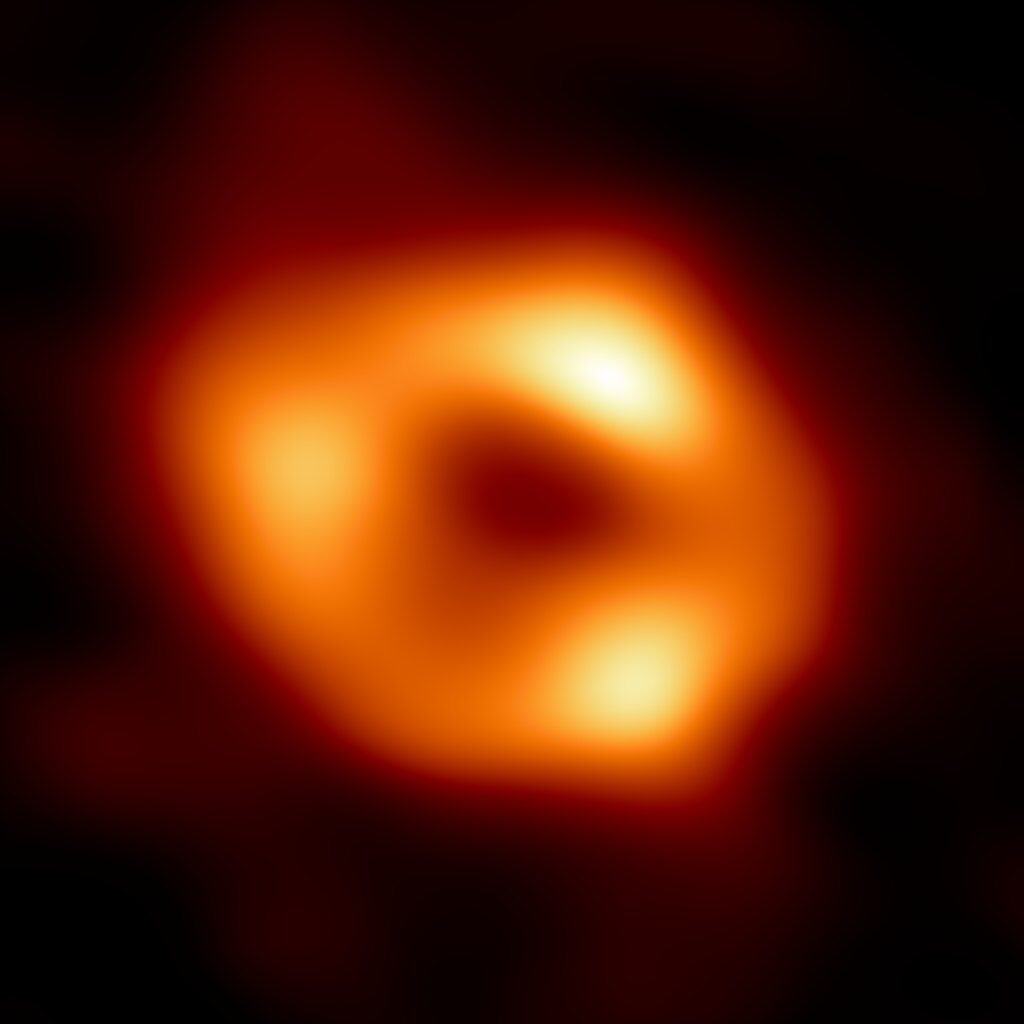Scary Barbie is the nickname for 2012lwx, also known as ZTF20abrbeie, and it is a supermassive black hole that’s over seven and a half billion light years away from our planet. It’s in the constellation Vulpecula in the northern sky and is only observable with dramatically powerful telescopes. What’s so special about Scary Barbie? How a supermassive black hole is shredding a star is discussed below.
What Is a Supermassive Black Hole?

Sagittarius A is the supermassive black hole at the center of the Milky Way.
Supermassive black holes are the biggest kind of black holes in the universe. Black holes are objects so dense that their gravity pulls anything and everything into them, including light. A black hole is classified as supermassive when it is estimated to have a mass of at least one hundred thousand times more than our Sun, though these objects can be billions of times more massive.
Most supermassive black holes are at the center of galaxies. For example, the supermassive black hole named Sagittarius A exists at the center of our Milky Way galaxy. However, Scary Barbie does not have an associated galaxy, which makes it unique.
Shredding a Star: What Is Spaghettification?

Black holes use destructive tidal forces to pull apart stars in a process called spaghettification.
©Space Telescope Science Institute Office of Public Outreach – NASA and ESA – Upload of https://stsci-opo.org/STScI-01EVSTS3CN8M168XBFJFTVXCVT.png – Original / License
Spaghettification is how a star is shredded as it gets closer to a black hole. Scary Barbie is so bright because it is actively shredding a star, and the energy that allows this specific black hole’s emanating light to exist is beyond comprehension. However, Super Barbie is not the first time spaghettification has been observed; it is just the biggest instance ever recorded.
As the victim star approaches the supermassive black hole, tidal forces start sucking the star toward the black hole. These tidal forces pull harder on the part of the star facing the black hole, while the part facing away doesn’t experience the same intensity of forces. As the star gets closer to the black hole, the difference between these forces starts stretching the star.
This stretching of the star elongates it, and since the star is orbiting the supermassive black hole, it continues to elongate while spiraling around the black hole. It’s like a noodle being twisted around a fork, which is why this process is called spaghettification. This noodle becomes so thin and long that it is a string of atoms when it reaches the event horizon.
As the noodled star winds around the black hole, it condenses so tightly that it emits a gargantuan amount of light. This process of matter supercondensing is called accretion. The light created by accretion is what scientists are observing in Earth’s night sky.
Why Is Scary Barbie a Special Supermassive Black Hole?

Scary Barbie is much brighter than a thousand supernovas.
©wenani/Shutterstock.com
Scary Barbie is one of the largest supermassive black holes ever discovered. It probably has a mass of about one hundred million Suns to one billion Suns. Despite its gargantuan nature, much bigger black holes exist.
Scary Barbie is the brightest black hole ever discovered, with a luminosity easily over a thousand times greater than the brightness of a supernova. It is slowly putting a massive star through spaghettification, releasing huge amounts of light while it does this. It is also the most energetic transient event ever recorded in the known universe.
The Scary Barbie supermassive black hole’s light is considered transient, which makes sense because the destruction of a star is a finite occurrence. This means that scientists watch it change a lot. Extremely destructive or violent events usually cause transients, and this accretion qualifies.
Transients may appear, fade, disappear, and come back in a short period. Most celestial phenomena change in centuries and millennia, whereas transients change every few hours or days.
However, although Scary Barbie is transient, it has lasted much longer than any other observed transient object. It is over two years old and will probably last at least a few more years. This is an unprecedented discovery unmatched by any observed transient black hole in the past.
The photo featured at the top of this post is © Space Telescope Science Institute Office of Public Outreach - NASA and ESA - Upload of https://stsci-opo.org/STScI-01EVSTS3CN8M168XBFJFTVXCVT.png – License / Original
Thank you for reading! Have some feedback for us? Contact the AZ Animals editorial team.







